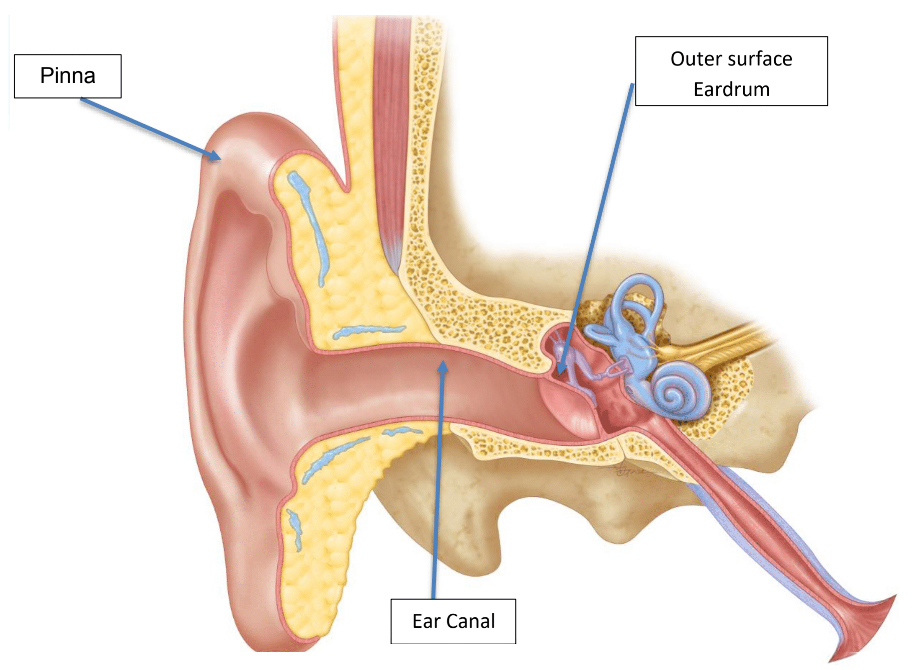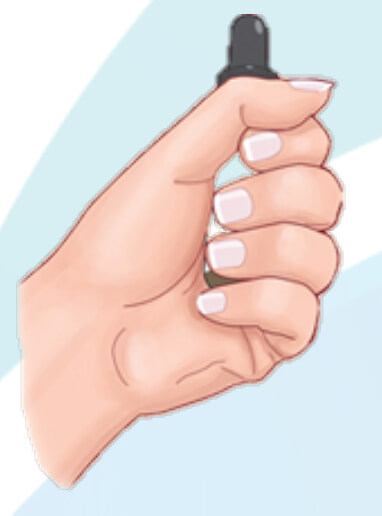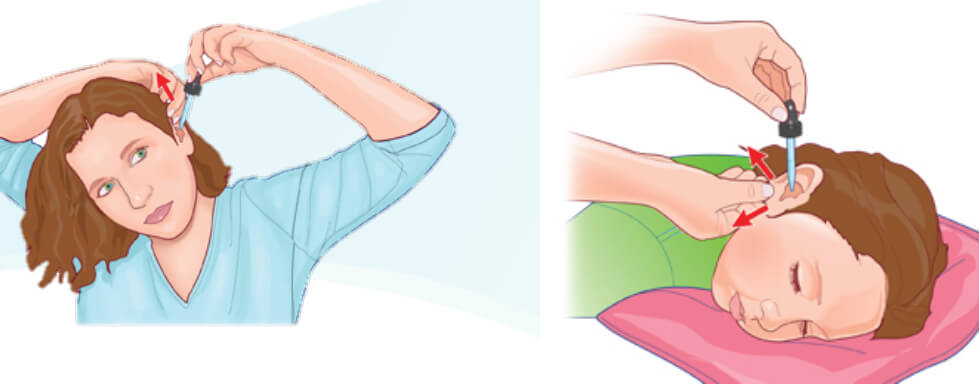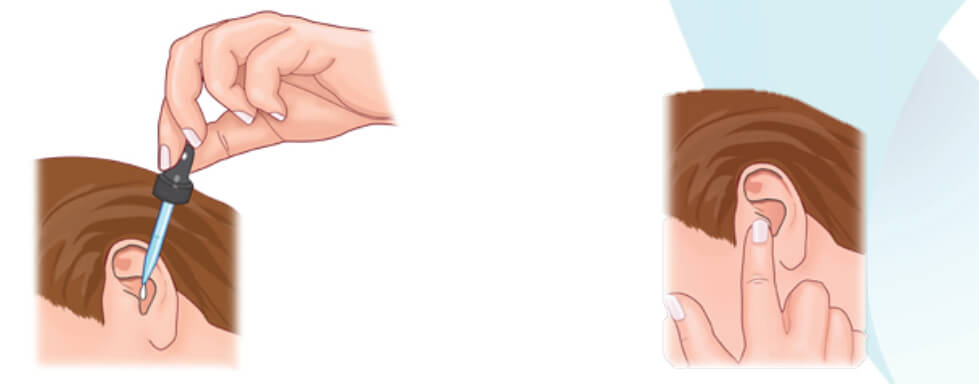Patient Information for Otitis Externa and Discharging Ears
Who is this information for?
This information is for patients, families and carers following a diagnosis of otitis externa or a
discharging ear.
What is otitis externa?
Otitis externa (or “swimmer’s ear”) is inflammation of the outer ear. This includes conditions of the pinna (the external ear), the ear canal and the outer surface of the eardrum. This inflammation can be an acute or chronic condition. The inflammation can be throughout the outer ear or just localised to one area. It can be due to infection (bacteria or fungi), or inflammatory conditions of the skin of the ear and ear canal (eg eczema).

The Outer Ear
What causes Otitis Externa?
An outer ear infection happens when the normally protective and ‘water-proof’ skin of the ear canal gets irritated or scratched, and then gets infected.
This can happen when a person:
- Puts cotton swabs, fingers, or other things inside the ear
- Cleans the ear canal to remove ear wax –not only as a small amount of ear wax protective from water, bacteria, and injury, but removing it frequently can cause damage to the ear canal skin.
- Swims on a regular basis –this removes some of the ear wax, allowing watert
- soften the ear canal, which allows bacteria which normally live in the ear canal to enter the skin more easily.
- Wears hearing aids, headphones, or ear plugs –these can damage or irritate the skin of the outer ear and ear canal.
What are the symptoms of otitis externa?
The most common symptoms of Otitis externa are:
- Pain in the outer ear, especially when the ear is pulled or moved
- Itchiness of the ear
- Fluid or Pus leaking from the ear
- Difficulty hearing clearly
How do I manage the symptoms of otitis externa?
- Avoid getting the affected ear wet –wearing a shower cap or using cotton wool balls with Vaseline® in the ear canal when bathing can help, butavoid swimming until the ear infection has fully clearedis important.
- Remove any debris or discharge by cleaning the outer ear with moist cotton wool balls.
- DO NOT stick cotton buds or other things inside your ear canal
- Remove anything from your affected ear that may cause an allergic reaction such as hearing aids, ear plugs or earrings.
- Use medication for pain such as paracetamol or ibuprofen, unless contraindicated, to relieve any discomfort.
How is otitis externa treated?
Otitis externa and ear discharge can clear up by itself, however this can take several weeks without treatment.
- Ear Drops
- Medicated ear drops may be prescribed, which will need to be taken several times a day until the ear is better.

N.B.MEG do not have any affiliation with any company or brand

How do I apply ear drops?
- Wash your hands with soap and water
- Gently remove any discharge, earwax or debris from your external ear using a moist cotton wool ball.
- Warm the ear drops by holding them in your hand for a few minutes, as cold ear drops can make you feel dizzy.
- Lie on your side with the affected ear facing up before applying the drops directly into your ear canal.

- Gently push and pull your ear for about 30 seconds to workthe drops in and get any trapped air out.
- Stay lying down for three to five minutes to ensure that the ear drops do not come out of your ear canal.

- Leave the ear canal open to dry.
- Wash your hands with soap and water
- Medicated ear drops may be prescribed, which will need to be taken several times a day until the ear is better.
- Pain Medications:
- Otitis externa can be painful, so you should take non-prescription pain relief as directed.
- If pain is severe you may need stronger prescription pain relief.
- Water Precautions:
- Avoid getting the affected ear wet –wearing a shower cap or using cotton wool balls with Vaseline® in the ear canal when bathing can help.
- Avoid swimming until the ear infection has fully cleared.
What specialist treatment might I require?
Depending on the extent of your ear condition, a health practitioner may need to remove debris from inside your ears to make ear drops more effective. This may require:
- Micro-suction: a small suction device is used to remove debris from the ear canal
- Dry swabbing: gently mops out debris from your ear canal
You may also need an ear wick, which is a cotton plug inserted into your ear canal. An ear wick allows the ear drops to reach further into your ear canal even when it is very swollen inside. Ear wicks are changed every two to three days as required.
Concerns or questions?
You can contact your ENT Specialist at the Melbourne ENT Group (MEG):
- Phone: 1300- 952-808
- Email: admin@melbentgroup.com.au
- Website: www.melbentgroup.com.au
Your GP is also the best contact for ongoing care and concerns.